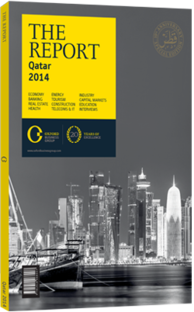OBG talks to Nabeel Mohammed Al Buenain, Project Executive Director, New Port Project (NPP)

Interview: Nabeel Mohammed Al Buenain
Given the anticipated completion date for the NPP, what is to be expected in terms of announcement of tenders and awarding of contracts for the construction of the project?
NABEEL MOHAMMED AL BUENAIN: We have created transparency in the tendering process, particularly in terms of pricing. One of our main goals was to create a transparent platform on our website where individuals can access available tenders, pricing, information relating to prequalification and whether a bid has been submitted or not, among a wide range of information pertaining to the tendering process.
To date we have awarded 29 tenders, eight of which were in 2013. We anticipate awarding the remaining 20 tenders for the project in 2014. In accordance with our schedule, the first phase is expected to be launched in 2016, and to date 35% of the total project has been completed.
As one of the state’s megaprojects, how is the NPP ensuring that local contractors continue to be involved in the project?
AL BUENAIN: Another priority for the project was to ensure that during the tendering process we allowed the local economy to develop by including local contractors in the project’s contracts.
We have delineated four types of tenders including marine, equipment, infrastructure and buildings. For infrastructure and building tenders, the government has mandated that the main contractors should all be Qatari and should have an international contractor as their partner. As for the marine and equipment tenders, these are open to participation by both local and international companies.
Additionally, we have made it so that any subcontracting work must be awarded to a Qatari subcontractor. We have also put very strict criteria in place to ensure that all companies comply with international standards and that we help the local economy grow as a result of these large megaprojects.
What role will the NPP play in catering to imports for the 2022 FIFA World Cup, and what other benefits will the project create?
AL BUENAIN: The NPP is currently one of the top priorities for the government, particularly given that the 2022 FIFA World Cup is approaching and it is one of the key developments for Qatar National Vision 2030. The government is investing QR27bn ($7.4bn) in the megaproject, spread over 26.5 sq km. Qatar will need to import large quantities of containers and materials in the lead up to the tournament.
The current facilities and the commercial port in Doha cannot adequately accommodate the required amount of goods that will have to be imported for the 2022 FIFA World Cup.
The new port will not only function as a new seaport but will also host a base for Qatar Emiri Naval Forces and the Qatar Economic Zone 3. We are prioritising the sections that need to be completed before 2016 in order for the port to be operational, and will finish the other sections at a later date.
Upon completion of the NPP, what is the projected total capacity for twenty-foot equivalent units (TEU) in comparison to the existing port?
AL BUENAIN: The first phase of the NPP, which is expected to be open in 2016, will have a capacity of 2m TEUs and 1.5m tonnes of general cargo. The current Doha port moved 376,754 TEUS and 652,567 tonnes of general cargo in 2012.
Upon full completion the port will be able handle up to 6m TEUs, but as I mentioned the current priority is to complete the first phase and we will assess the remaining phases as needed. The port’s basin will be approximately 3.8 km in length, 700 metres wide with a depth of 17 metres.
The current Doha Port has a depth of around 12.5 metres, which cannot accommodate large container vessels; however, at a depth of 17 metres the NPP will be able to receive the largest container vessels.
You have reached the limit of premium articles you can view for free.
Choose from the options below to purchase print or digital editions of our Reports. You can also purchase a website subscription giving you unlimited access to all of our Reports online for 12 months.
If you have already purchased this Report or have a website subscription, please login to continue.

